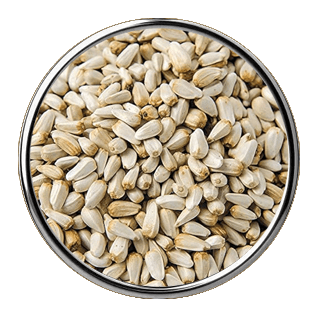Safflower Seeds are derived from the safflower plant, a thistle-like annual with bright orange or yellow flowers.
Traditionally grown for its oil-rich seeds, safflower is valued for producing edible oil, bird feed, and various industrial and pharmaceutical products. The seeds resemble sunflower seeds but are smaller, white, and more rounded.

High Oil Content : Contains 28–40% oil, depending on the variety
Rich in Healthy Fats : Particularly linoleic acid (polyunsaturated) or oleic acid (monounsaturated)
Cholesterol-Free : Often used in heart-healthy cooking oils
Versatile Crop : Used in food, cosmetics, paints, and traditional medicine
Edible Oil Production : Used to extract safflower oil, popular in salad dressings, cooking, and frying and high-oleic varieties are more stable and heat-resistant
Animal Feed : Used as bird feed—especially loved by cardinals and doves and oilcake (residue) used as livestock feed
Cosmetics & Skincare : Oil used in lotions, creams, and hair products for moisturizing and anti-inflammatory properties
Industrial Use : Used in paints, varnishes, and as a drying oil
Traditional Medicine : Sometimes used in herbal formulations for circulatory and inflammatory conditions
| Parameters | Value |
|---|---|
| Oil Content | 28% – 40% |
| Moisture | Max 8% |
| Admixture | Max 2% |
| Purity | 98% – 99.5% |
| Form | Whole seed |
| Color | White to Pale Ivory |